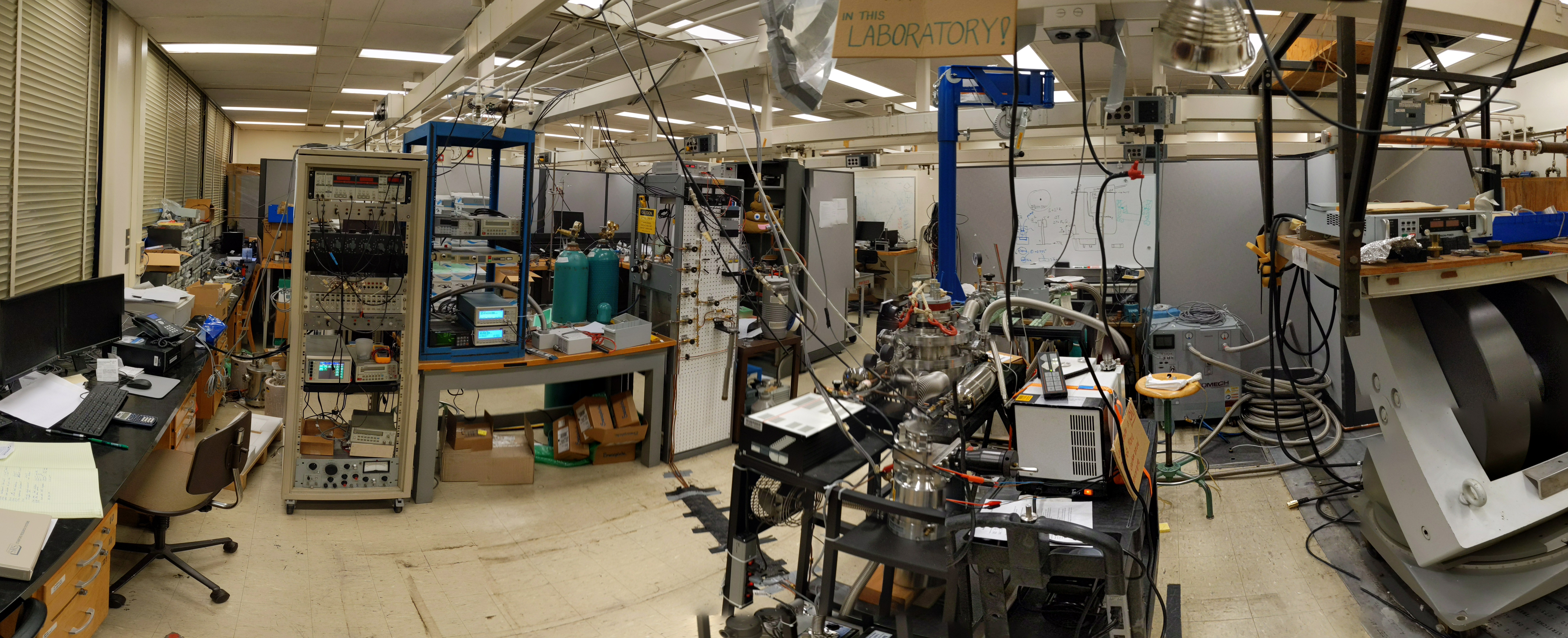




At the Sacramento Sate Low Temperature Lab, we study basic physical principles at temperatures at temperatures of about 1.5 K (-276 C or -457 F). At these temperatures everything is frozen, with one notable exception: helium. Helium, the seemingly mundane element that you use to blow up your party balloons (or make your voice sound funny) has some quite interesting properties at low temperatures. Due to its light mass, and relatively weak interaction with other helium atoms, it does not freeze at all under normal conditions. This means you can cool it down to a low enough temperature where quantum mechanics can take over, and turns liquid helium into a superfluid, where the liquid behaves in odd ways including its ability to flow without any viscosity.
Although helium does not freeze under normal conditions, it is possible to create solid helium by squeezing the liquid to 25 times atmospheric pressure, basically forcing the helium to form a solid. Since quantum mechanics plays a big role in the description of helium at these low temperatures, we call solid helium at “quantum solid.” The quantum-ness of solid helium is evident by the observed superfluid-like flow of mass through the solid. This mass flow (along with some other surprising observations of solid helium) has been related to defects that occur when the solid is formed.
The Sacramento State Low Temperature Lab is working to develop new sensor technology to measure the pressure of the solid helium in an attempt to learn more about these defects. This can give insights, not just into the strange world of solid helium, but also into the behavior of defects in solids, which are responsible for many of the everyday properties of solids.
Follow our progress on twitter: @SacStateLowTemp

The Low Temperature Physics Lab at Sacramento State
top view of refigerator |
Side view of regrigerator |
Instrument Rack |
Gas Handling System |
Cryostat |